Production Years and Facelift
The Renault Laguna II is the second generation of the popular family car from the French manufacturer. The model was produced from 2001 to 2008, replacing the first Laguna (1993–2000). In 2005, the car underwent a facelift that affected the exterior, interior, and technical components.
Key production phases:
- 2001–2004 – Initial version (Phase 1).
- 2004–2005 – Preparation for the facelift, introduction of new engines.
- 2005–2008 – Updated version (Phase 2) with a revised front end, new lighting, interior updates, and improved electronics.
After 2007, the Laguna II was succeeded by the third generation, which, however, did not match the success of its predecessor.
Model Code and Variants
The Laguna II was developed on the Renault D platform, which was also used for the Nissan Primera P12. Body styles included:
- BG0W / BG1W – Sedan (a rare version for certain markets).
- KG0W / KG1W – Five-door hatchback (the most popular variant).
- KG0W / KG1W – Grandtour station wagon (from 2002).
Design and Features
The Laguna II retained the smooth body lines characteristic of French cars of that era. After the 2005 facelift, the following changes were made:
- Front end – New grille, redesigned headlights.
- Rear lights – LED elements (in top-tier versions).
- Interior – Improved materials, redesigned instrument panel, multimedia system with a color screen.
One of the key features of the Laguna II was its frameless door design, which was uncommon for cars in its class.
Technical Specifications
The car was offered with a wide range of gasoline and diesel engines:
Gasoline engines:
- 1.6L (K4M, 107 HP)
- 1.8L (F4P, 120 HP)
- 2.0L (F4R, 140 HP)
- 2.0 Turbo (F4Rt, 170–205 HP) – GT sport version
Diesel engines (Renault-Nissan):
- 1.9 dCi (F9Q, 100–130 HP)
- 2.2 dCi (G9T, 150 HP)
Transmissions included 5- and 6-speed manuals, a 4-speed automatic (on early versions), and a CVT (on facelifted models).
Plastic Bumper Marking >PP+MD5<
In the facelifted version, the mounting points differ slightly.
How to Remove the Front Bumper
- Lift the hood.
- Under the hood, remove four clips (six clips on the 2005-2008 facelift) securing the upper part (radiator grille) of the front bumper.
- (2001-2004) Release the fasteners and remove the radiator grille.
- Move to the underside of the car. Unscrew the bolts securing the lower part of the wheel liners and the lower deflector (splash shield).
- For easier access, turn the wheels outward and detach the wheel liners from the bumper.
- Behind the liners, unscrew one bolt per side (two bolts on the 2005-2008 facelift) securing the bumper to the fenders.
- Release the sides from the fender clips by pushing the bumper forward.
- With an assistant, pull the bumper forward, disconnect the wiring for electrical components, and detach the headlight washer hoses (if equipped).
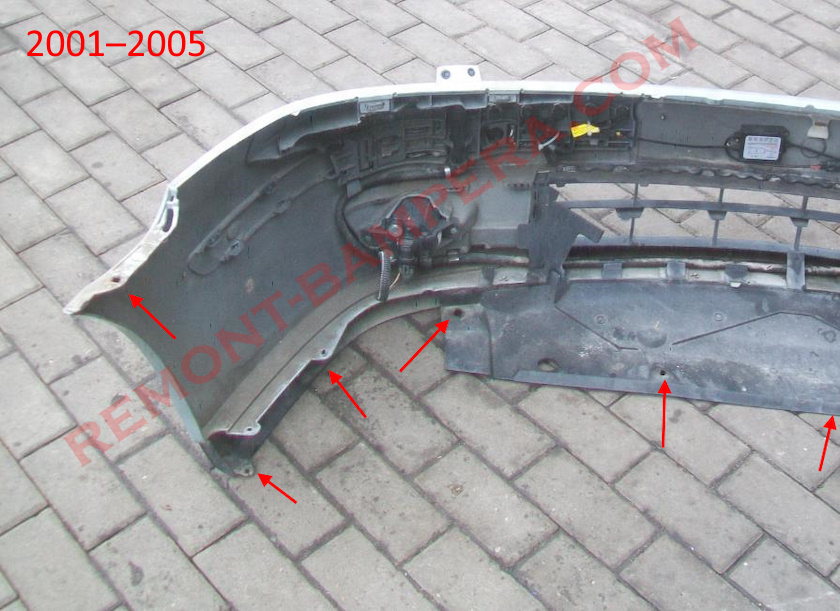
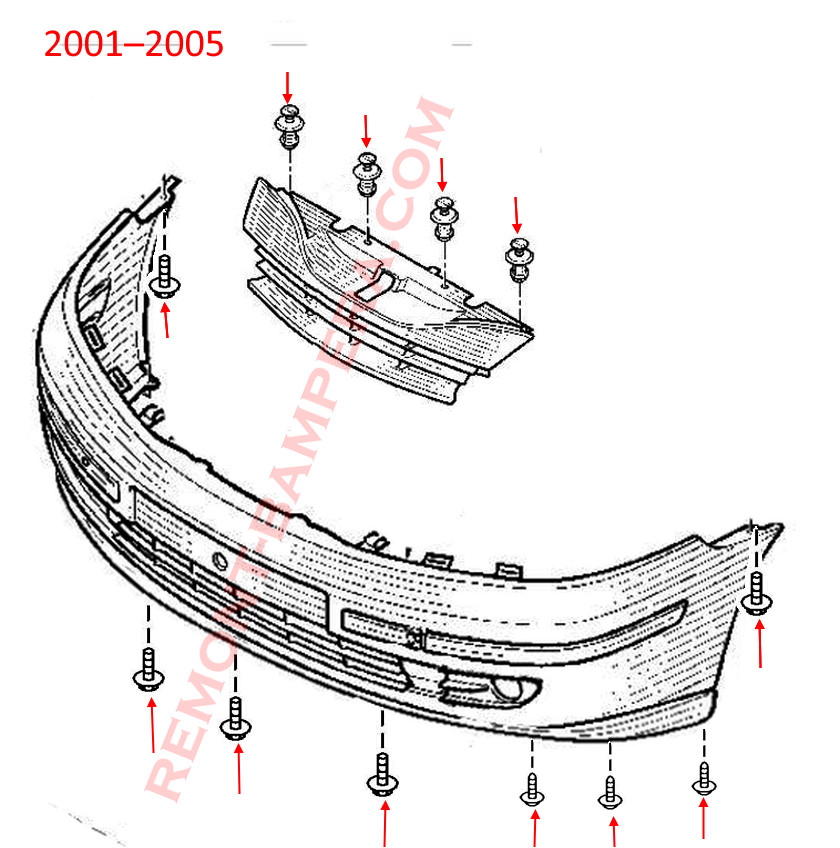
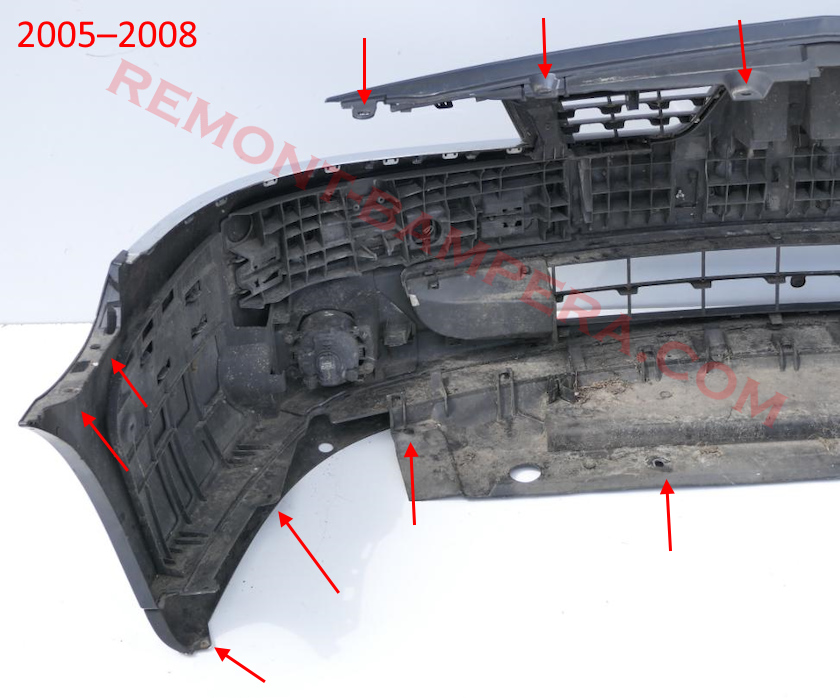
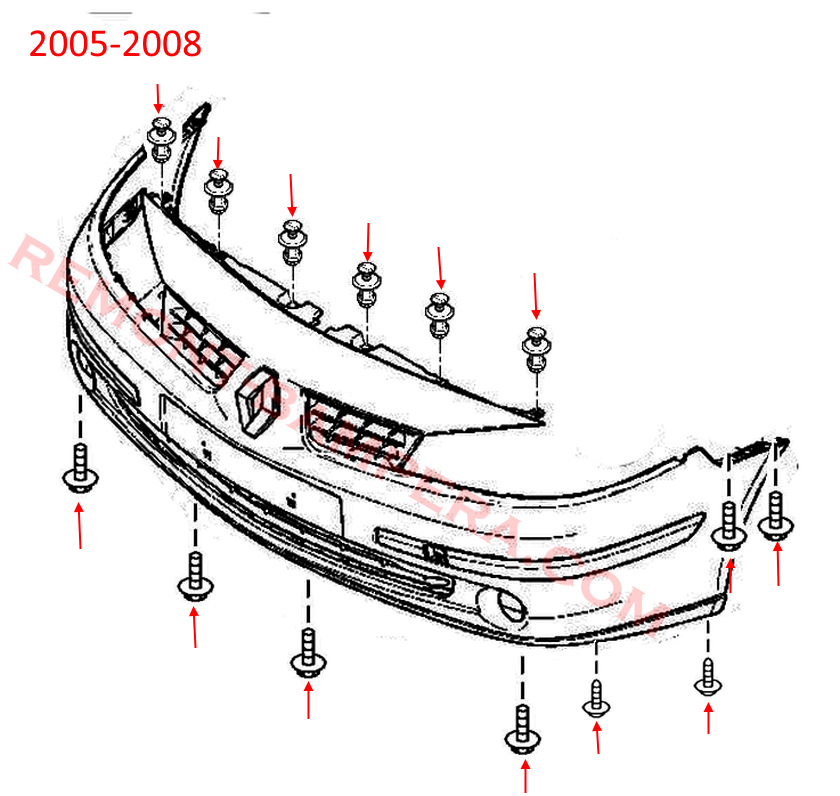
How to Remove the Rear Bumper
- First, remove the rear lights.
- Hatchback: From the trunk, unscrew one plastic nut per side and pull the taillights outward.
- Station wagon: In the trunk opening, unscrew four bolts. Open the side trim panels in the trunk and unscrew two bolts underneath, then remove the taillights.
- Under the taillights, unscrew two bolts per side securing the upper part of the rear bumper. Under the left taillight, disconnect the license plate light wiring.
- (Station wagon) In the trunk opening, remove two plugs and unscrew the bolts underneath.
- Move to the lower part. Unscrew four bolts securing the bumper from below and three bolts between the bumper and the rear trunk panel.
- In the wheel arches, unscrew one bolt per side and detach the wheel liners from the bumper. Behind the liners, remove one clip per side (inserted top to bottom) securing the bumper corners to the fenders.
- Release the fender clips and, with an assistant, pull the bumper backward to remove it.
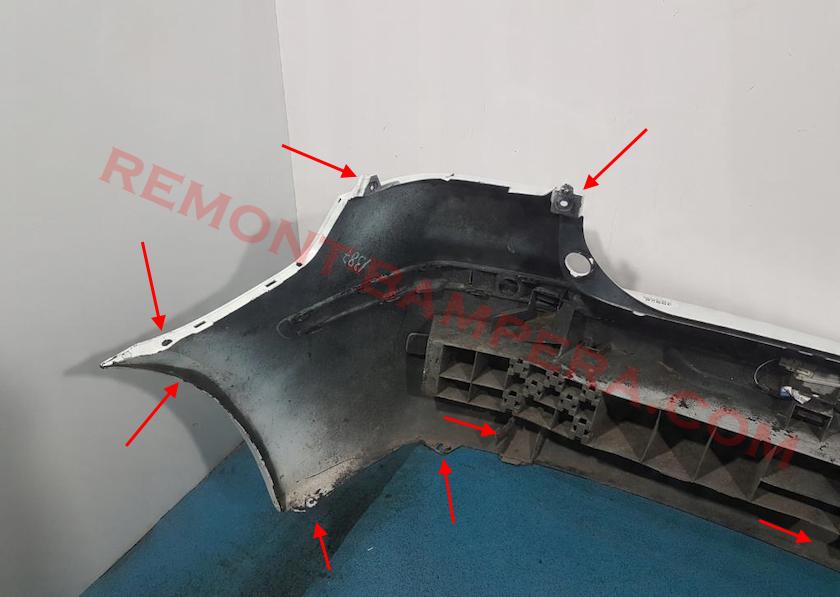
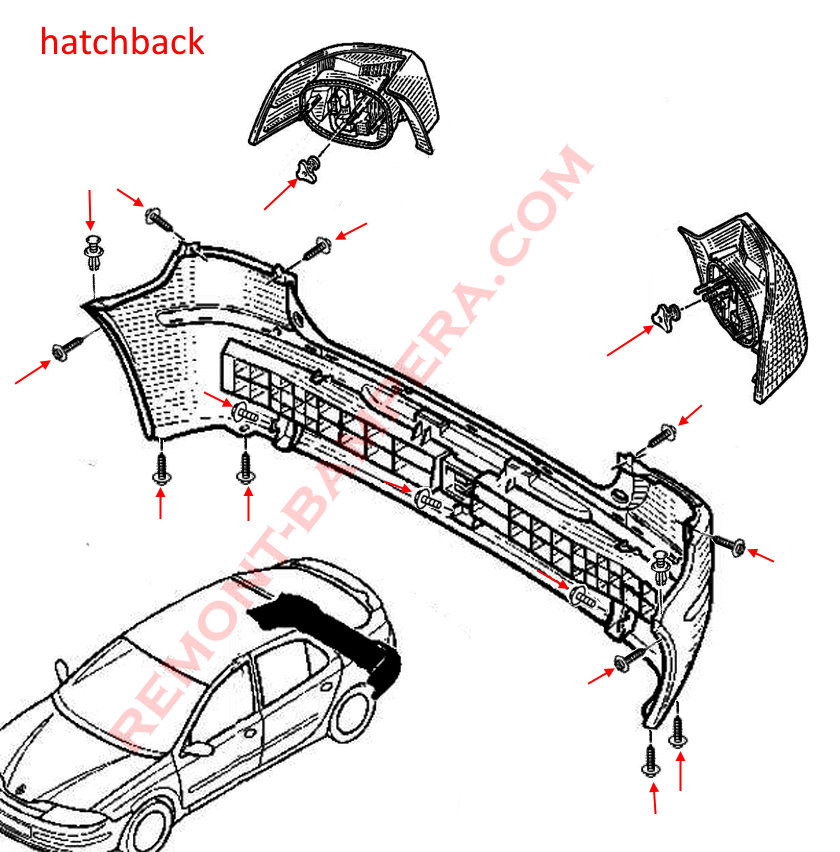
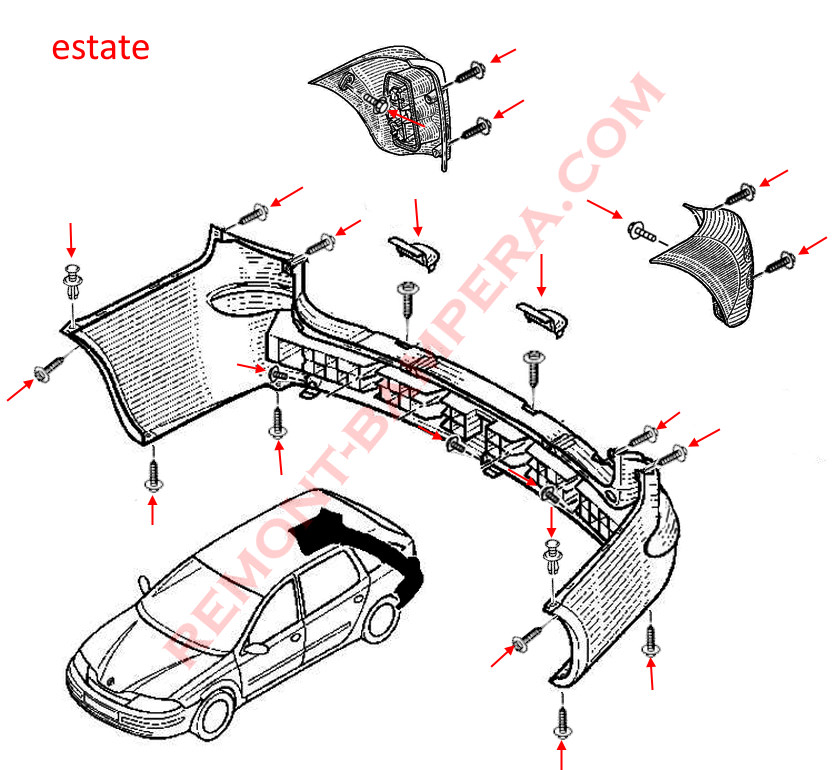
Interesting Facts
- The Laguna II was the first mass-produced car to receive a 5-star Euro NCAP rating (2001) due to enhanced safety features.
- In 2002, an all-wheel-drive version (4Control) was introduced but did not gain widespread popularity.
- Some countries offered a hybrid version (gasoline + compressed air), but it remained experimental.
- A sporty Renault Laguna V6 was built on the Laguna II platform, featuring a 3.0L engine (210 HP) and an automatic transmission.
Pros and Cons
Pros:
- High safety standards – sturdy body, airbags, stability control.
- Comfortable suspension – smooth ride, good noise insulation.
- Spacious interior – especially in the Grandtour wagon.
- Parts availability – thanks to shared platform with Nissan.
Cons:
- Unreliable electronics – frequent issues with sensors, CAN bus, central locking.
- Corrosion – particularly in early models (2001–2003).
- Weak automatic transmissions – 4-speed automatic prone to overheating.
- Expensive maintenance – repairs for turbo engines and complex systems can be costly.
Conclusion
The Renault Laguna II is a typical European family car of the 2000s. It offered good safety, comfort, and a variety of configurations but suffered from electrical issues. The 2005 facelift partially addressed these flaws, making the model more modern. Today, the Laguna II is an affordable used car, but buyers should pay close attention to the body condition and electrical systems.

 English
English  Italiano
Italiano  Français
Français  русский
русский  Deutsch
Deutsch  Español
Español